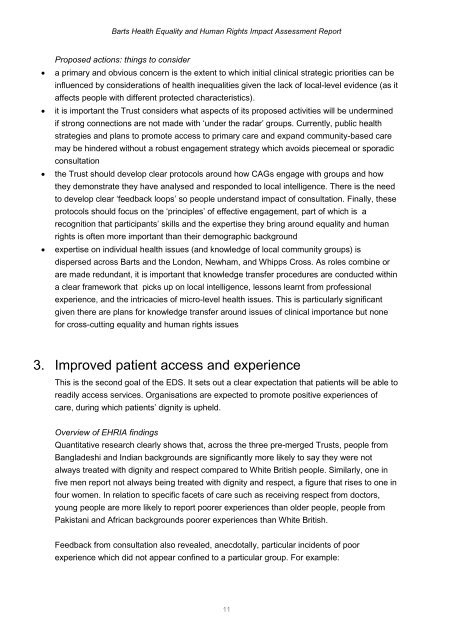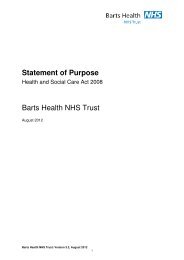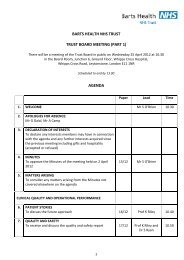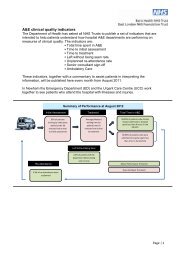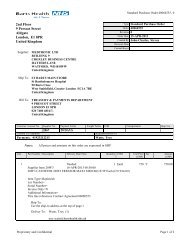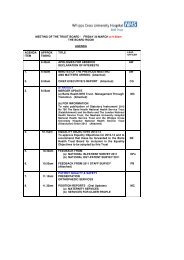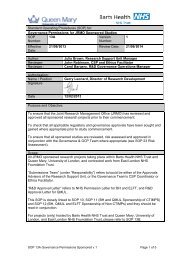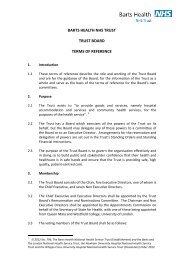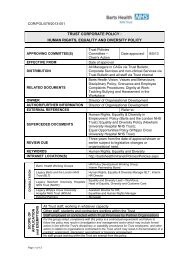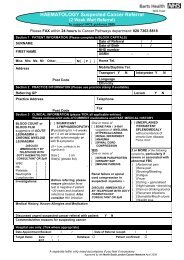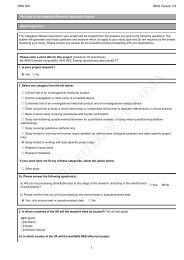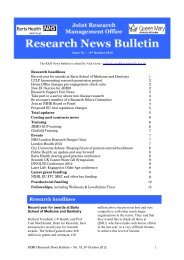Barts Health Equality and Human Rights Impact Assessment Report
Barts Health Equality and Human Rights Impact Assessment Report
Barts Health Equality and Human Rights Impact Assessment Report
- No tags were found...
You also want an ePaper? Increase the reach of your titles
YUMPU automatically turns print PDFs into web optimized ePapers that Google loves.
<strong>Barts</strong> <strong>Health</strong> <strong>Equality</strong> <strong>and</strong> <strong>Human</strong> <strong>Rights</strong> <strong>Impact</strong> <strong>Assessment</strong> <strong>Report</strong>Proposed actions: things to considera primary <strong>and</strong> obvious concern is the extent to which initial clinical strategic priorities can beinfluenced by considerations of health inequalities given the lack of local-level evidence (as itaffects people with different protected characteristics).it is important the Trust considers what aspects of its proposed activities will be underminedif strong connections are not made with ‘under the radar’ groups. Currently, public healthstrategies <strong>and</strong> plans to promote access to primary care <strong>and</strong> exp<strong>and</strong> community-based caremay be hindered without a robust engagement strategy which avoids piecemeal or sporadicconsultationthe Trust should develop clear protocols around how CAGs engage with groups <strong>and</strong> howthey demonstrate they have analysed <strong>and</strong> responded to local intelligence. There is the needto develop clear ‘feedback loops’ so people underst<strong>and</strong> impact of consultation. Finally, theseprotocols should focus on the ‘principles’ of effective engagement, part of which is arecognition that participants’ skills <strong>and</strong> the expertise they bring around equality <strong>and</strong> humanrights is often more important than their demographic backgroundexpertise on individual health issues (<strong>and</strong> knowledge of local community groups) isdispersed across <strong>Barts</strong> <strong>and</strong> the London, Newham, <strong>and</strong> Whipps Cross. As roles combine orare made redundant, it is important that knowledge transfer procedures are conducted withina clear framework that picks up on local intelligence, lessons learnt from professionalexperience, <strong>and</strong> the intricacies of micro-level health issues. This is particularly significantgiven there are plans for knowledge transfer around issues of clinical importance but nonefor cross-cutting equality <strong>and</strong> human rights issues3. Improved patient access <strong>and</strong> experienceThis is the second goal of the EDS. It sets out a clear expectation that patients will be able toreadily access services. Organisations are expected to promote positive experiences ofcare, during which patients’ dignity is upheld.Overview of EHRIA findingsQuantitative research clearly shows that, across the three pre-merged Trusts, people fromBangladeshi <strong>and</strong> Indian backgrounds are significantly more likely to say they were notalways treated with dignity <strong>and</strong> respect compared to White British people. Similarly, one infive men report not always being treated with dignity <strong>and</strong> respect, a figure that rises to one infour women. In relation to specific facets of care such as receiving respect from doctors,young people are more likely to report poorer experiences than older people, people fromPakistani <strong>and</strong> African backgrounds poorer experiences than White British.Feedback from consultation also revealed, anecdotally, particular incidents of poorexperience which did not appear confined to a particular group. For example:11


